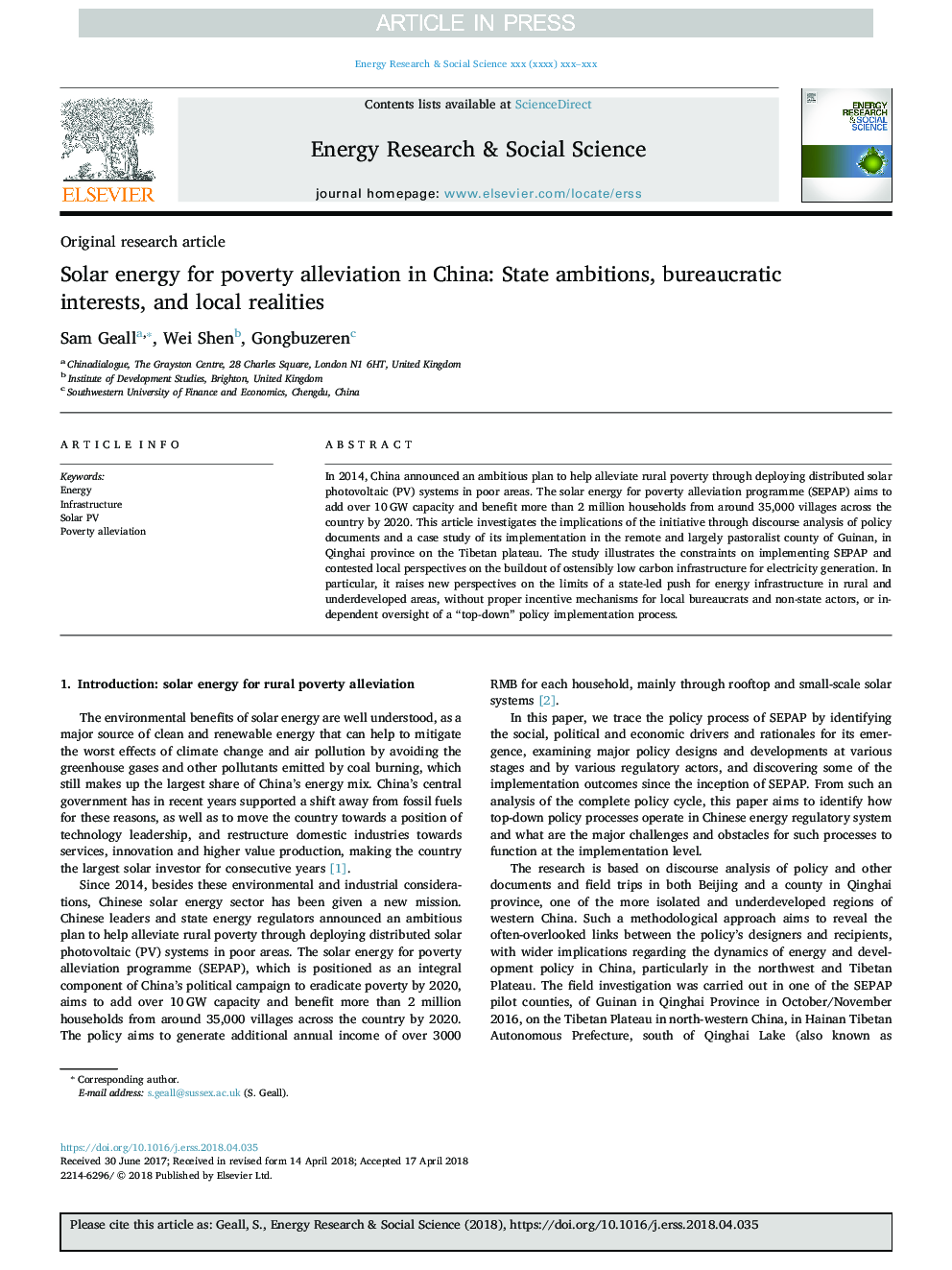| Article ID | Journal | Published Year | Pages | File Type |
|---|---|---|---|---|
| 6557440 | Energy Research & Social Science | 2018 | 11 Pages |
Abstract
In 2014, China announced an ambitious plan to help alleviate rural poverty through deploying distributed solar photovoltaic (PV) systems in poor areas. The solar energy for poverty alleviation programme (SEPAP) aims to add over 10â¯GW capacity and benefit more than 2 million households from around 35,000 villages across the country by 2020. This article investigates the implications of the initiative through discourse analysis of policy documents and a case study of its implementation in the remote and largely pastoralist county of Guinan, in Qinghai province on the Tibetan plateau. The study illustrates the constraints on implementing SEPAP and contested local perspectives on the buildout of ostensibly low carbon infrastructure for electricity generation. In particular, it raises new perspectives on the limits of a state-led push for energy infrastructure in rural and underdeveloped areas, without proper incentive mechanisms for local bureaucrats and non-state actors, or independent oversight of a “top-down” policy implementation process.
Related Topics
Physical Sciences and Engineering
Energy
Energy (General)
Authors
Sam Geall, Wei Shen, Gongbuzeren Gongbuzeren,
